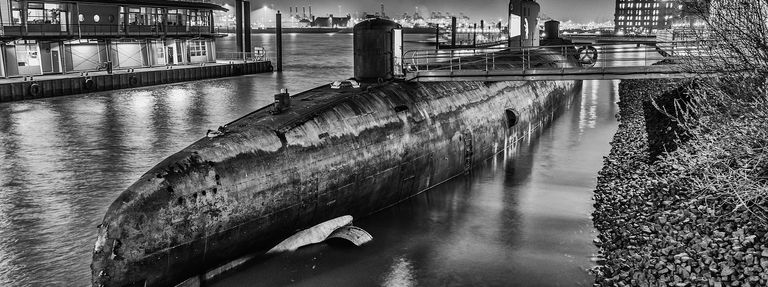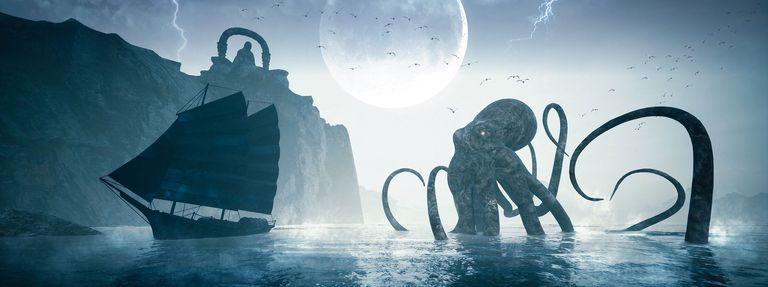The History of Deep-Sea Exploration
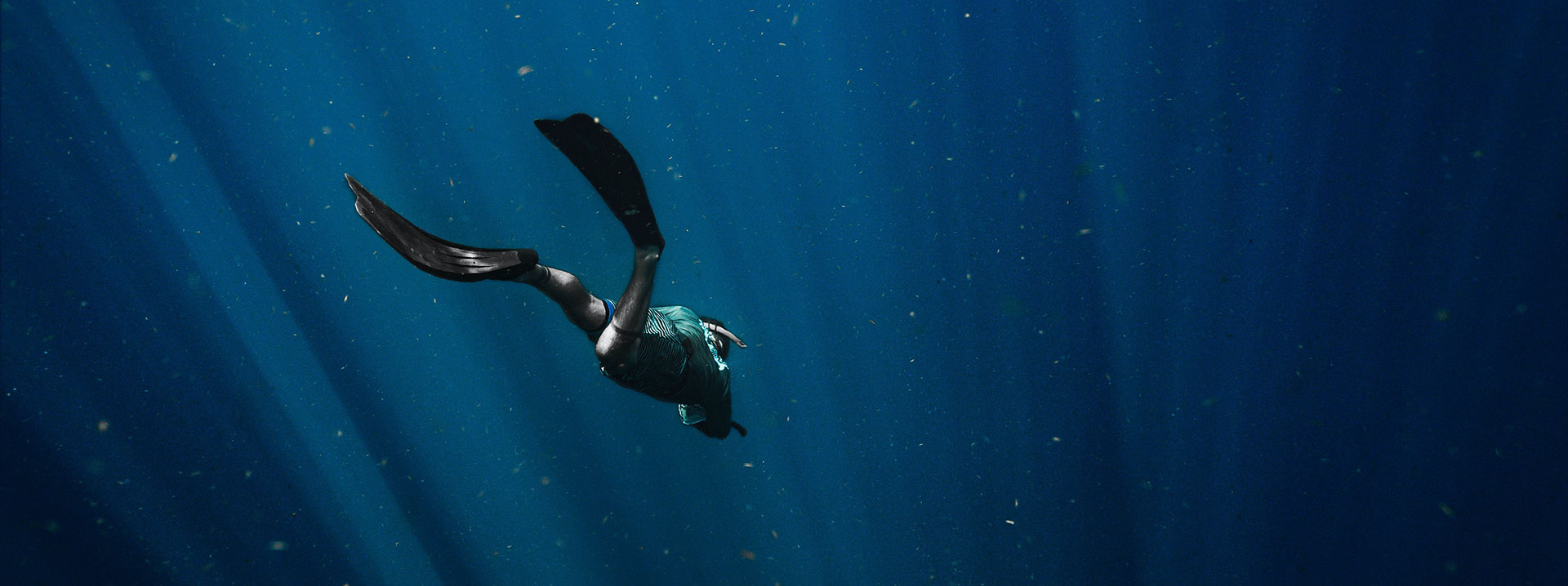
Deep-sea exploration is a relatively modern science that began piquing curiosity and interest in the late 1860s when modern scientific theories about the origin of life and evolution were emerging.
What drew us to the deep sea? How did we invent vessels that could take us below the surface to the ocean's deepest depths? Do deep sea explorers need a boating safety certification?
We're sure some sort of certifications are a good idea before diving deep (even if it's not an online safety course). However, let's focus on a brief history of exploring the sea depths for now.
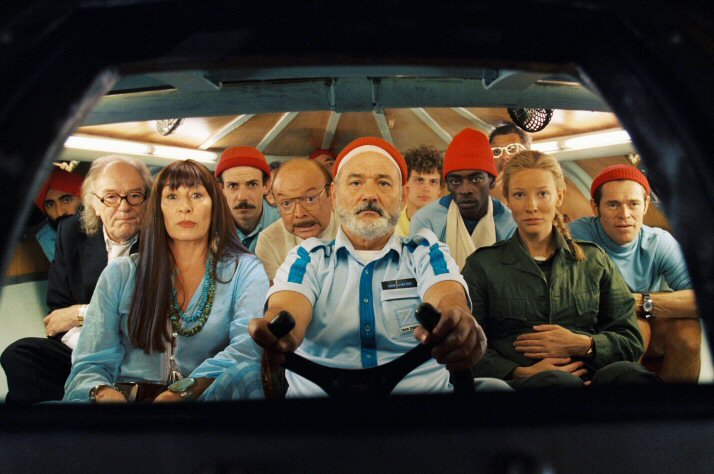
How It Began: The Diving Bell
Before curiosity eventually drew explorers to what lies beneath the ocean's surface, the idea of exploring the unknown depths of the sea was met with significant trepidation, notably throughout the Middle Ages. It wouldn't be until the Renaissance that people began questioning what lay beneath them.
It was about this time that the first "diving bell" was invented. It consisted of a barrel that rested on the divers' shoulders and was supported by slings.
They were typically made of glass or wood, but they ultimately proved to be quite ineffective, as they could only reach about 40 meters. Plus, the pressure from the water damaged the divers' ears and sinuses.
The Bathysphere
Record Distance Traveled: 3,028 ft.
Year: 1934
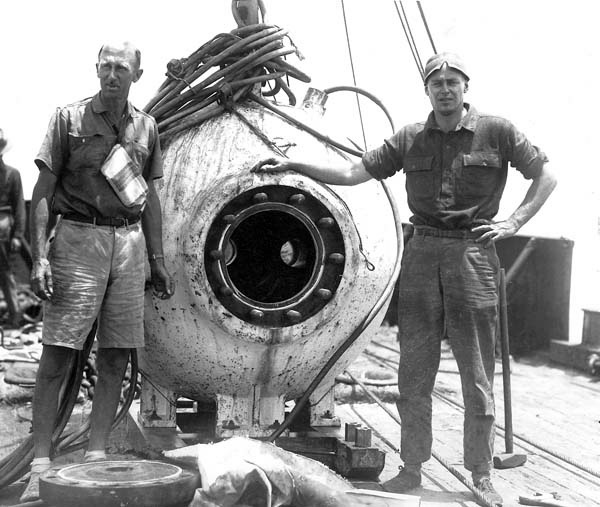
Charles Beebe was a well-known adventurer who was contacted by Otis Barton in 1926 to embark on a deep-sea expedition with him.
Barton was from a very wealthy family and had already begun experimenting with underwater exploration in his youth. Before making contact with Beebe, he had already ventured the waters of Massachusetts with the help of his own makeshift deep-diving helmet and by weighing himself down with rocks.
Barton sent Beebe detailed designs for the submersible he was working on, and Beebe agreed to team up with him. The two invented the Bathysphere, and from 1930 to 1934, their underwater chamber progressed steadily, reaching its pinnacle in the historic 1934 dive.
The Bathysphere was a 4,500-pound hollow steel ball lowered on a cord. It had three small portholes in the front, one larger hatch in the back, and two oxygen tanks that carried eight hours' worth of air.
The two inventors reached a record-breaking 3,028 feet (1/2 mile) right off the coast of Bermuda in their vessel. Beebe communicated with the surface by sending telephone cables to a ship above, transmitting messages about the new underwater life passing before their portholes.
Although Beebe wanted to stay at that depth longer to observe, the captain on the ship above would not allow this and pulled them up after five minutes. Beebe named several new species of deep-sea animals, but these observations were met with controversy, with some critics claiming that these fish were mere illusions.
However, many of Beebe's observations while underwater have since been confirmed by advanced underwater photography. Additionally, the record he set during the dive remained unbroken until 1949. At that time, Barton broke it with a 4,500-foot descent in a new deep-sea vessel he created called the Benthoscope.
The Bathyscaphe Trieste
Record Distance Traveled: 35,800 ft.
Year: 1960
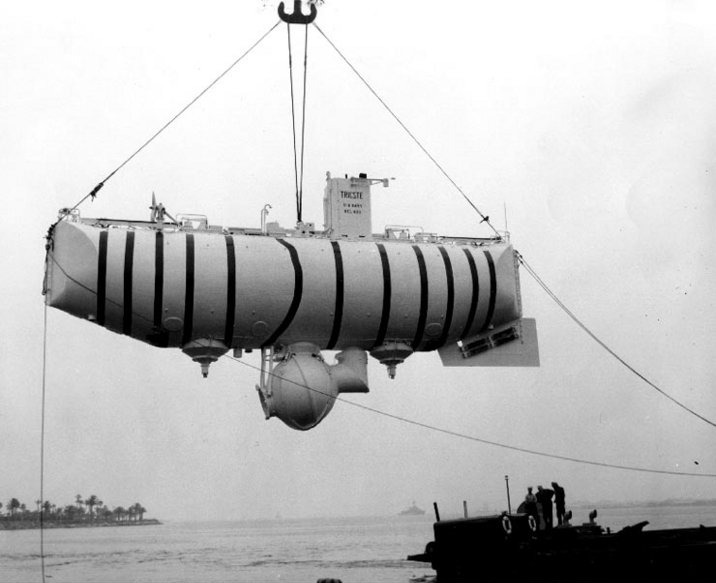
Swiss Balloonist and inventor Auguste Piccard met Beebe at the Chicago World Fair in 1933. While Beebe was demonstrating the Bathysphere, Piccard was showcasing his hydrogen-filled gondola. Beebe and Piccard quickly became friends and Piccard was soon inspired to modify his high altitude balloon so that it would use similar principles to descend into the deep ocean.
This paved the way for the Bathyscaphe Trieste, originally called the FNRS-2. He began working on it in 1937 but had to put his project on hold until after the Second World War.
The FNRS-2 was completed by 1948. Unlike the Bathysphere, it was attached to a free-floating tank rather than suspended from the surface. It was also referred to as the "submarine balloon," as it was designed to float in water just like a balloon floats in air. Its heavy ballast would allow it to sink to a desired depth when engaged, then rise to the surface when released (though initial sea trials were unsuccessful).
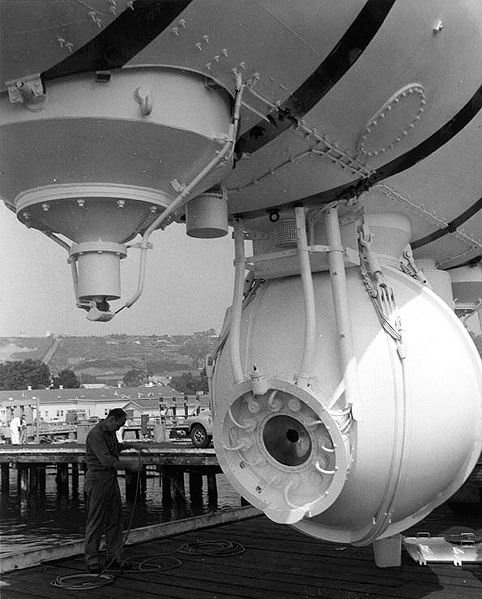
Later, Piccard and his son Jacques designed and built a new bathyscaphe, the Trieste. The Trieste was a float chamber filled with gasoline for buoyancy and a separate pressure sphere. Nine tons of magnetic iron pellets were placed on the craft as ballast, both to speed the descent and allow ascent.
In 1953, they navigated Trieste to a depth of 10,330 feet in the Mediterranean. The U.S. Navy then took an interest in the vessel, and the Piccards sold it to them in 1958. The Americans made extensive modifications to the ship, equipping it with a new cabin to reach even deeper ocean trenches.
On January 23, 1960, touched the bottom of the Challenger Deep and set a new world record of 35,800 feet. The Challenger Deep is the deepest point in the world's ocean in the Mariana Trench near Guam. Jacques Piccard and U.S. Navy Lieutenant Don Walsh manned the submersible.
Now that the depth race was over, the oceans were open to more thorough scientific exploration.
Jacques Cousteau and the Development of Scuba Gear
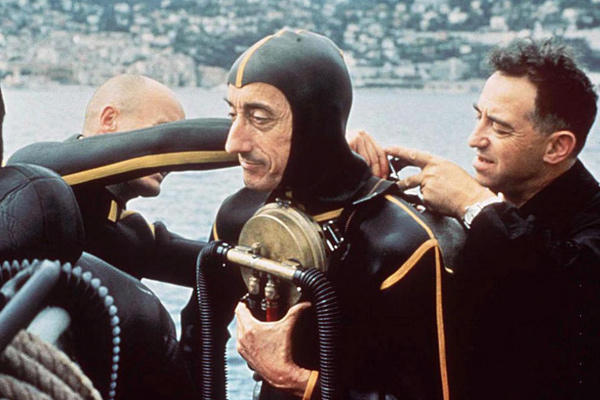
The legendary ocean explorer Jacques Cousteau first served in the French Navy during the Second World War before sailing around the world on his iconic ship, Calypso.
During and after his time in the Navy, he developed various types of underwater diving gear. His most notable, however, was the "Scuba" (which stands for Self Contained Underwater Breathing Apparatus), designed in 1943 with the help of Emile Gagnan. The scuba was originally called the Aqualung.
The Conshelf
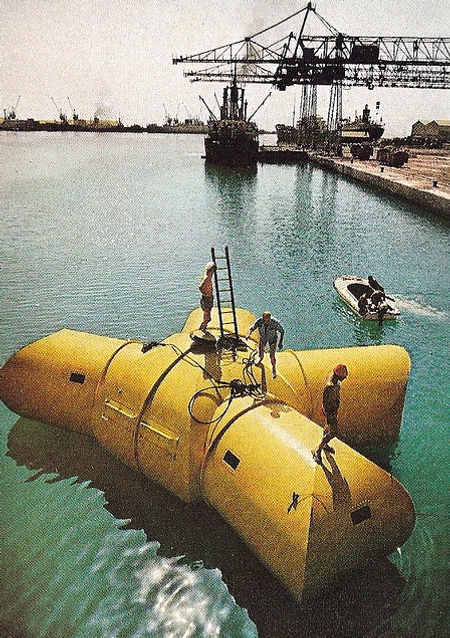
In 1962, Cousteau created the first underwater habitat, the Conshelf. A year later, Conshelf II was built in the Red Sea near Sudan. The underwater home could house ten oceanauts who lived there for 30 days. A documentary about the project won Cousteau an Academy Award in 1964.
As well-received as the projects were, they were far too costly to continue funding and were eventually abandoned.
Alvin
Alvin was built by General Mills' (yes – the cereal guys) Electronics Group and designed to be more efficient for deep-sea exploration.
Owned by the U.S. Navy and operated by the Woods Hole Oceanographic Institution in Massachusetts, Alvin was first tested in 1964 and has performed more than 4,000 dives since. The vessel can carry two scientists and one pilot and can stay underwater for up to nine hours at 14,800 ft.
In 1966, Alvin and a Navy robot retrieved a hydrogen bomb. It was lost in the Mediterranean after the collision of a refueling tanker and an American B-52. Alvin has been part of many research projects, notably discovering giant tube worms on the Pacific Ocean floor near the Galápagos Islands.
There's More to Explore
Though there have been considerable advancements in deep-sea exploration, the ocean's floor remains a great mystery, with only about two percent explored. Modern submarines continue evolving to push the boundaries of crush depth and to dive deeper than ever before.
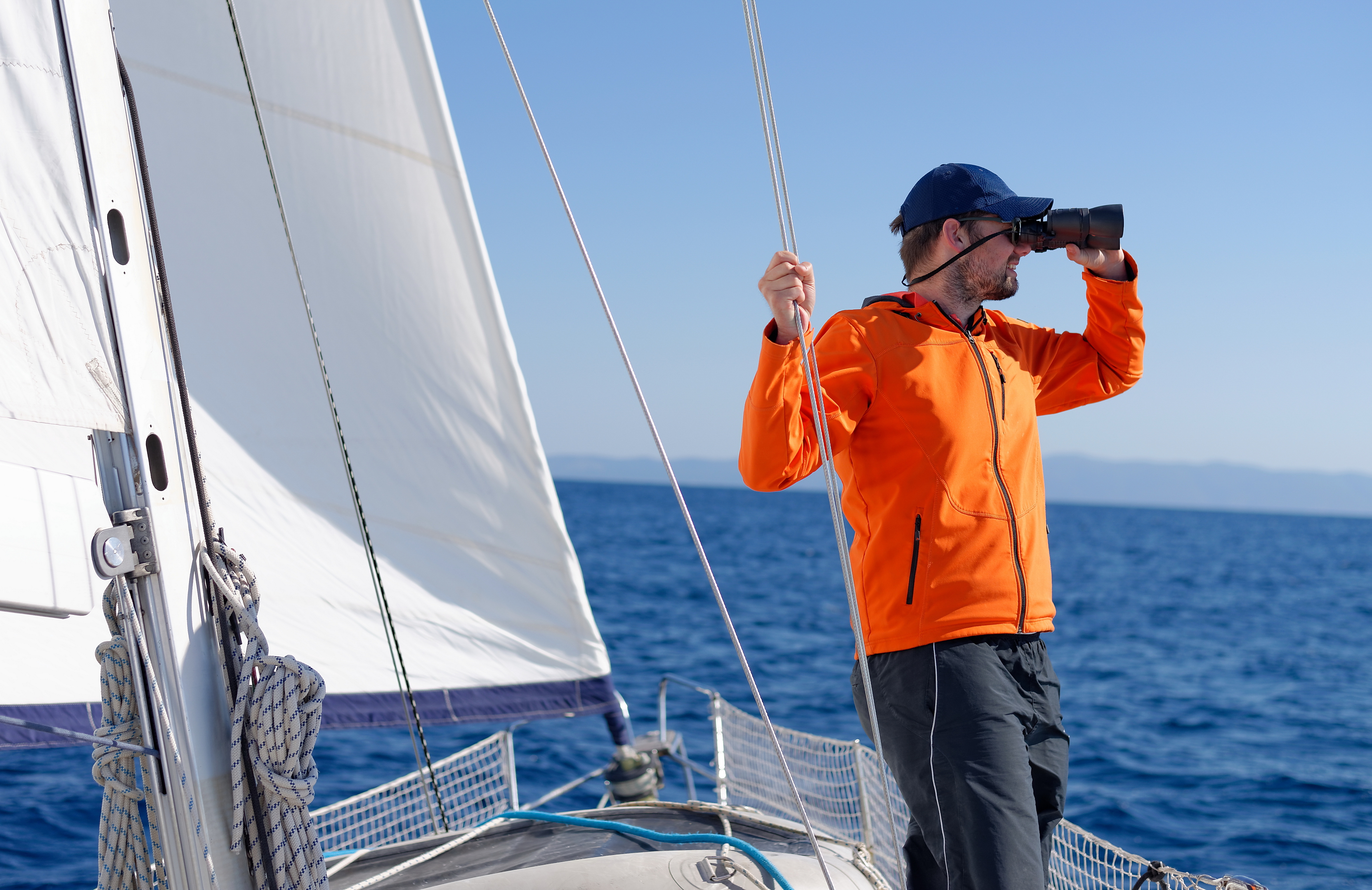
Boating Education Helps You Explore the Water Safely
Staying safe on and in the water is crucial – even if you're not diving deep into the ocean (or even to the bottom of a nearby lake). Safety must always be a priority for boaters and water enthusiasts!
So, if you're wondering if you need a boating license or safety education to hit the water, the answer is "yes!" Whether you discover a new sea animal deep below the surface or simply want to enjoy a day on the water's surface while fishing, make sure you understand crucial boating safety best practices.
BOATERexam helps boaters and explorers stay safe by providing online courses that teach about required safety equipment for your boat, how to navigate waters around other boaters, how to choose a lifejacket, and what to do if something goes wrong.
Before launching for your next water adventure, get certified! When boating in the U.S., choose the state-approved course for your state. For boating in Canada, select the Canada-approved course.
Originally published June 3, 2011. Content updated April 20, 2023.

